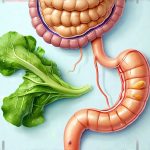Indigestion and nausea are incredibly common experiences, often disrupting daily life with their unpleasant symptoms. While occasional discomfort is usually nothing to worry about, persistent or severe issues can significantly impact wellbeing. Many people discover that certain foods consistently trigger these problems, but identifying those specific culprits can be surprisingly difficult. This article delves into practical methods for tracking down and eliminating food triggers causing indigestion or nausea, empowering you to regain control over your digestive health and enjoy meals without anxiety. It’s about building awareness and making informed choices, rather than restrictive dieting.
The key to managing food-related digestive distress lies in understanding that everyone is different. What bothers one person may have no effect on another. Furthermore, sensitivities can develop over time, meaning a food you once tolerated might suddenly become problematic. This makes a systematic approach crucial – relying solely on intuition or vague recollections often isn’t enough. We’ll explore techniques ranging from meticulous food diaries to carefully planned elimination diets, all geared toward pinpointing your personal triggers and building a more comfortable relationship with food. It is important to note that persistent severe symptoms should always be discussed with a healthcare professional. If you suspect something deeper may be going on, consider checkups that explain recurring nausea and headaches.
The Art of Food Diaries: Detailed Tracking for Insight
A detailed food diary isn’t just about listing what you eat; it’s about capturing the context surrounding your meals and any subsequent reactions. Many people underestimate the power of this seemingly simple method, but consistent, thoughtful tracking can reveal patterns that would otherwise remain hidden. The goal is to create a comprehensive record that allows you to correlate food intake with digestive symptoms.
- Start by recording everything you consume: all foods, beverages (including water), snacks, and even small tastes. Be specific about ingredients where possible – “pasta sauce” isn’t enough; list the components of the sauce.
- Note when you eat, where you eat, and your emotional state at the time. Stress, anxiety, and hurried meals can all impact digestion.
- Most importantly, record any symptoms you experience: indigestion, nausea, bloating, gas, heartburn, stomach cramps, or changes in bowel habits. Be precise about timing – how long after eating did the symptom appear? How severe was it (on a scale of 1 to 10)?
Consistency is paramount. A diary kept sporadically won’t yield useful information. Aim for at least one to two weeks of meticulous tracking to build a reliable dataset. Digital food diary apps can be helpful, offering features like symptom logging and data analysis, but even a simple notebook works effectively if you commit to using it diligently. The more detailed your record, the easier it will be to identify potential triggers. Understanding what causes issues is often the first step; you might also want to explore diagnostics that explain weird reactions to healthy food.
Elimination Diets: A Structured Approach to Discovery
Once you have some initial leads from your food diary, an elimination diet can provide further clarity. This involves temporarily removing suspected trigger foods from your diet and then reintroducing them one at a time to observe any reactions. It’s a more proactive method than simply avoiding foods based on guesswork.
An elimination diet should be approached systematically and ideally guided by a registered dietitian or healthcare professional, especially if you have underlying health conditions. Generally, the process involves removing common food allergens and irritants for a period of two to three weeks – things like dairy, gluten, soy, corn, eggs, nuts, and shellfish are often starting points. After this elimination phase, foods are reintroduced individually, with several days between each reintroduction to allow you to assess any symptoms that arise. Reintroduce only one food at a time; introducing multiple foods simultaneously makes it impossible to pinpoint the culprit.
If you notice a recurrence of your digestive symptoms after reintroducing a particular food, that food is likely a trigger and should be avoided – at least for a period. It’s important to remember that elimination diets aren’t meant to be permanent restrictions. They are diagnostic tools designed to help you identify foods that cause problems so you can make informed choices about your diet. If you struggle with bathroom delays due to food fear or avoidance, seek professional guidance.
Identifying Common Food Culprits: Beyond the Usual Suspects
While dairy, gluten and caffeine frequently top lists of food triggers, it’s crucial to broaden your scope and consider less obvious possibilities. FODMAPs (Fermentable Oligosaccharides, Disaccharides, Monosaccharides And Polyols) are short-chain carbohydrates that can cause digestive issues in some people, even if they don’t have a formal allergy or intolerance. These are found in a wide range of foods including onions, garlic, apples, pears, and certain sweeteners.
- High-FODMAP foods ferment in the gut, leading to gas, bloating, and discomfort.
- Artificial sweeteners, particularly sugar alcohols like sorbitol and mannitol, can also trigger digestive upset.
- Foods high in fat content are known to slow down digestion and may contribute to indigestion for some individuals.
Consider not only the food itself but also how it’s prepared. Fried foods, spicy foods, and heavily processed meals can all be more difficult to digest than simpler, whole-food options. Pay attention to portion sizes as well – even a typically tolerated food can cause problems if consumed in excessive quantities. You may find that learning about foods that cause gas and how to avoid them helpful, too.
The Role of Food Combinations: Digestion Efficiency Matters
The way you combine foods during a meal can sometimes impact digestion. While there’s no universally accepted “food combining” rulebook, understanding basic digestive principles can be helpful. Complex carbohydrates and proteins require different enzymes for breakdown, so overwhelming your system with both at once might lead to indigestion.
- Separating fruit from other food groups is often recommended because it digests quickly; pairing it with heavier foods can cause fermentation in the gut.
- Combining excessive amounts of protein and fat can also slow down digestion, potentially leading to discomfort.
- Drinking large amounts of liquid during meals may dilute digestive enzymes, hindering proper breakdown.
These are general guidelines, not strict rules, and individual tolerance varies. Experiment with different food combinations and observe how your body responds. The goal isn’t necessarily to completely overhaul your eating habits but rather to optimize digestion by being mindful of how foods interact with each other. If you want to improve gut health long-term, consider food rituals that train the gut to relax and perform.
Staying Hydrated & Managing Stress: Supporting Digestive Function
Proper hydration is essential for healthy digestion, as water helps move food through the digestive tract and prevents constipation. Dehydration can exacerbate indigestion symptoms. Aim to drink plenty of water throughout the day, particularly before, during, and after meals.
Stress and anxiety have a profound impact on the digestive system. When you’re stressed, your body redirects blood flow away from digestion, hindering its efficiency. Incorporate stress-management techniques into your daily routine – mindfulness, yoga, meditation, or simply spending time in nature can all be beneficial. Prioritizing relaxation can significantly improve digestive function. Remember, addressing the emotional component of digestive distress is just as important as identifying food triggers. A holistic approach that considers both physical and mental wellbeing will yield the most sustainable results. If you suspect a deeper issue with your gut lining, scans and labs that track leaky gut progress can offer insights.


















